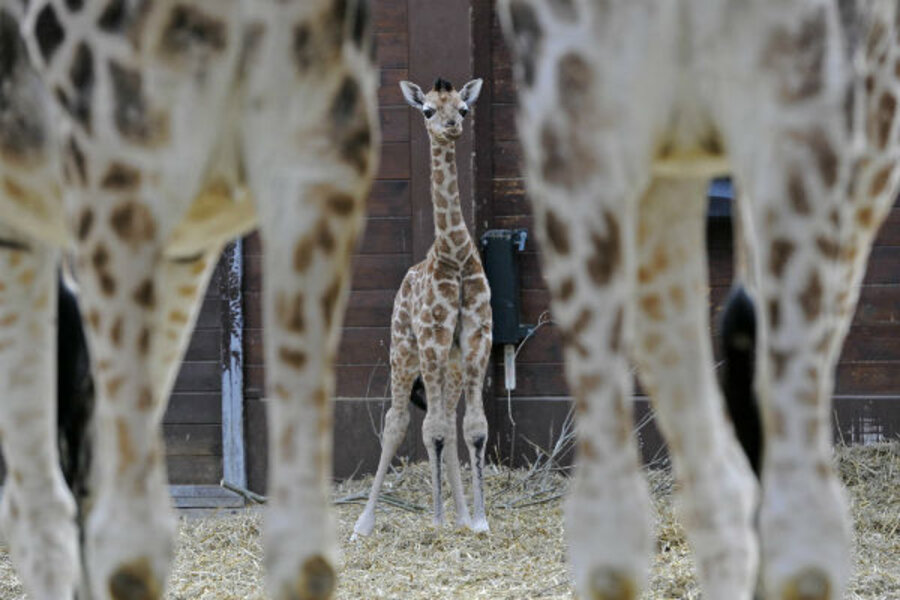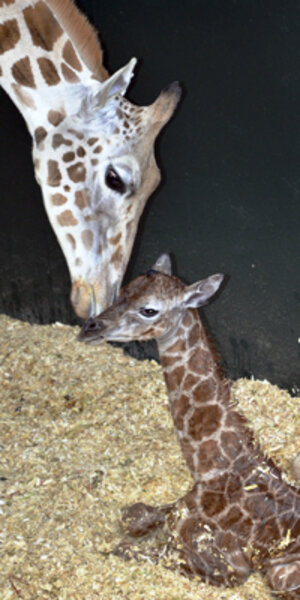Rare giraffe born at Connecticut refuge. It's a girl, and she needs a name
Loading...
Petal, a 6-year-old endangered Rothschild giraffe, gave birth to a female calf Friday, marking the first giraffe birth for the LEO Zoological Conservation Center in Greenwich, Conn.
The mother and baby giraffes have bonded “extremely well,” according to the center staff. Within 30 minutes of the birth, the calf was standing and nursing while the mother cleaned her with her 18-inch tongue.
“It's really astonishing how a huge animal like that ... how delicately and in such a nurturing way she approaches caring for her calf,” Marcelle Leone, founder and director of the center, told the Greenwich Time. "She's a great mom," Ms. Leone added.
Leone said the newborn calf is already curious and approaching humans. She joins the center’s five other giraffes, including two pregnant ones.
The LEO Zoological Conservation Center is a 100-acre refuge that focuses on breeding at-risk species. The center houses the animals at off-site breeding centers providing large, natural habitats and an environment for the animals in which humans are not all around them. Other species that have had new births at the center include a kangaroo, an aardvark, and a white-faced Saki monkey.
The giraffe birth is a milestone for the center, which is home to the only giraffes in Connecticut.
“This is serving our mission,” Leone said. “What we're doing is working. Being an off-exhibit facility, it means so much for the animals to live that low-impact life.”
Native to East Africa, the Rothschild giraffe is classified as endangered on the International Union for Conservation of Nature Red List – fewer than 670 are left in the wild. They are now extinct in the Sudan, but can still be found in western Kenya and eastern Uganda. They are named after Lord Walter Rothschild, a British zoologist, who encountered them on an expedition to East Africa in the early 1900s.
After the average gestation period of 15 months, mother giraffes give birth while standing in order to guard against predators, which means baby giraffes drop six feet to the ground when born. More than half of calves born in the wild fall prey to predators.
Rothschild giraffes are distinguished from other giraffe subspecies by their coloring and patch marks, which are less jagged than Masaii giraffes. They have light, cream-colored background and no markings below their knees, according to the Rothschild Research Project based in Kenya. No two giraffes have the same pattern on their coats – their markings can be used to identify them, like fingerprints for humans.
The newborn giraffe will nurse for nine months, and there are currently no plans to send her to another facility.
“The offspring will definitely be with us for the first year, if not indefinitely,” Leone told the Greenwich Time.
The LEO Zoological Conservation Center is asking people to help name the new giraffe, which now stands 6 feet tall. The average height for females is 16 to 18 feet, and for males 17 to 20 feet. Their weight ranges from 1,800 to 2,600 pounds.







